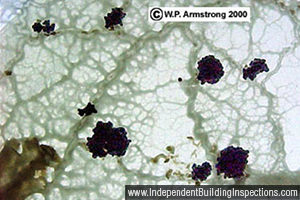 What is mould?
What is mould?
Mould is a type of fungus. Many different types of mould are found in homes and other buildings. They spread by releasing millions of tiny spores into the airand can have serious health effects.
Mould needs moisture to grow
Moulds need moisture to grow and are usually found in damp, poorly ventilated areas of homes, such as bathrooms.
You can’t see the spores with the naked eye, but you may be able to see moulds – grey, green or black in colour – growing on damp surfaces.
Mould spores can be reduced by improving ventilation in your home, and by limiting sources of moisture and condensation.
Mould spores are pollutants
Mould spores are a source of indoor air pollution and airborne mould spores can cause allergic reactions similar to hay fever in sensitive people. The health effects of mould can range from mild to very serious.
People who experience allergic reaction to mould spores are also more likely to suffer from asthma.
 Where does mould comes from?
Where does mould comes from?
Floods, leaking pipes, inadequate site drainage, windows, and roofs (in particular) are all sources of moisture that can encourage mould contamination. Be on the lookout for mould if you have any of these situations:
- Increased humidity due to poor ventilation in sub floor areas.
- Improper drying of flooded areas.
- Lifestyle choices like keeping the house closed without running an air conditioner or dehumidifier.
- Poor housecleaning..
How do mould spores spread?
Moulds reproduce by tiny spores; the spores are invisible to the naked eye and float through outdoor and indoor air. Mould can grow indoors when something as simple as mould spores land on surfaces that remain wet for several hours.
While mould spores are invisible, mould growth is often visible; it may appear cottony, velvety, granular, or leathery and have varied colours of white, grey, reddish brown, black, yellow, or green. It will have a distinct mould odour – usually musty.
You can often feel the chill in a room or space where mould is growing. Be very careful of these areas. Look for excess moisture or water damage such as leaks and water stains or even rising damp staining by way of efflorescence.
 Effects of mould on your health
Effects of mould on your health
Wheezing and difficulty in breathing, nasal and sinus congestion, eye irritation (burning, watery, red, blurry vision, and light sensitivity), dry, hacking coughs, sore throats, nose and throat irritation, shortness of breath, central nervous system problems (headaches, memory problems, and mood swings), aches and pains, and possible fevers – these are some of the symptoms that you are your family members may experience due to mould infestation.
Mould is not only a hazard that can have serious health effects, it can also significantly reduce the value of your building. So at the first sign or sniff of mould, you want to take action to avoid big problems later.
If you think you may have a mould problem, then call 0419 868 008 for an independent inspection and mould report.


 Where does mould comes from?
Where does mould comes from? Effects of mould on your health
Effects of mould on your health